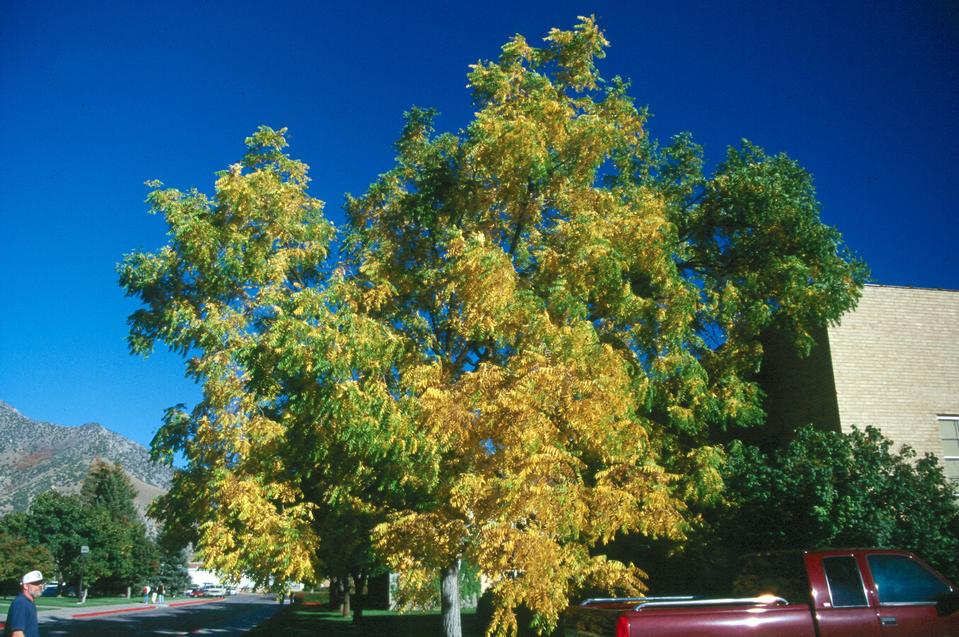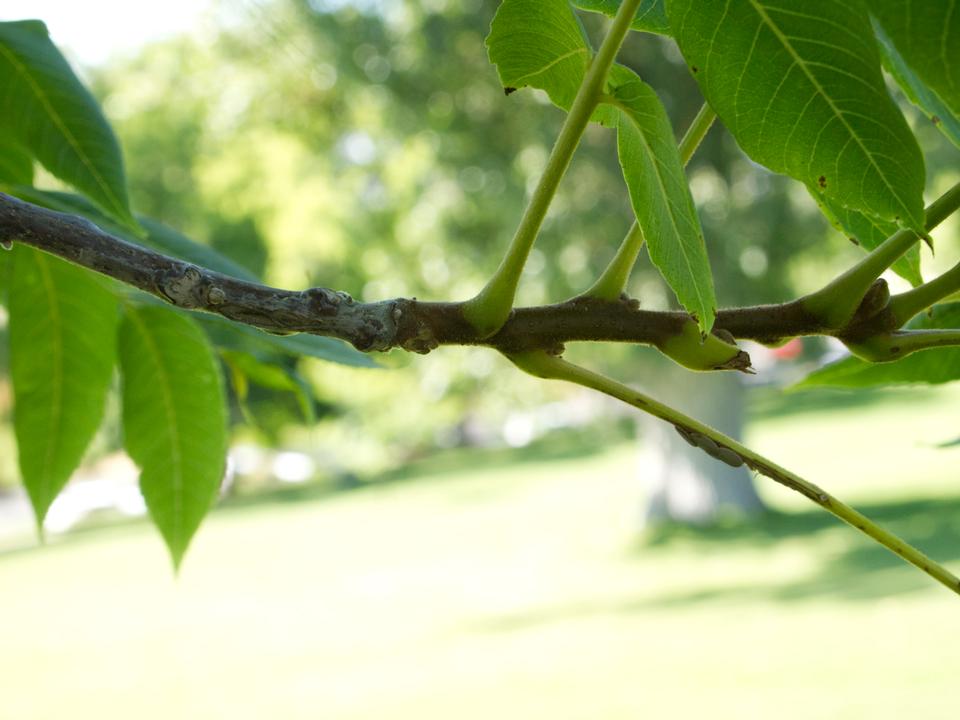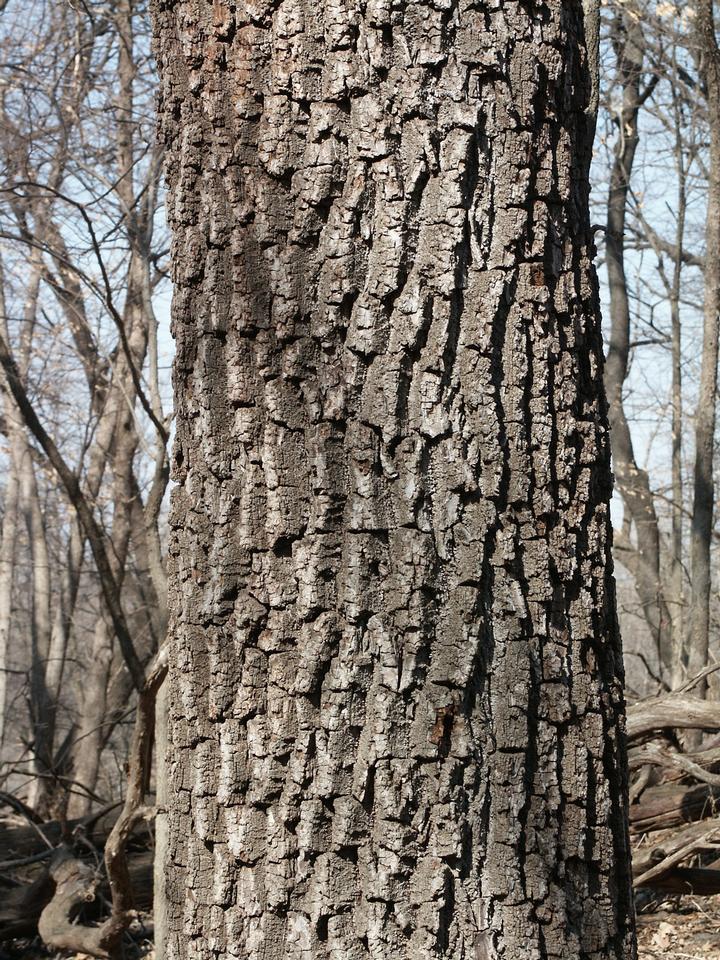Walnut, Black
Juglans nigra
Juglandaceae - Walnut
Description
Leaves: Alternate; once pinnately compound; 1' to 2' long; with 15 to 23 leaflets; terminal leaflet often missing; deciduous; leaflets 3" to 4" long, ovate-lanceolate, serrate margins, glabrous above, hairy beneath; light yellow-green; characteristic odor when crushed; rachis stout, usually hairy; leaflets often deciduous before the rachis/petiole, which can persist well into the winter and is a good identifying characteristic.
Twigs/buds: Twigs stout; light brown; with yellow-brown to brown, chambered or divided pith. Terminal bud short and blunt, larger than laterals, hairy; laterals much smaller, often with more than one at each leaf scar.
Flowers/fruit: Monoecious. Flowers small; male flowers on long catkins; female borne in groups of one to four. Fruit a 1-1/2" to 2" diameter nut; round; covered by a thick, glabrous, yellow-green, fleshy husk which becomes black and wrinkled; nut inside with rough, dark, very hard shell; sweet, oily, strong flavored nut meat within.
Bark: Dark brown to gray-black; broken pieces showing chocolate-brown; intertwining ridges forming a diamond pattern.
Wood: Important; sapwood white to light brown; heartwood chestnut-brown; growth rings distinct; semi- ring-porous; rays indistinct; hard; strong; used for lumber, fine furniture, veneer. This is our highest- valued hardwood, but it is not worth near as much in Utah as where it is native because of a lack of markets and the poorer quality of our trees for lumber and veneer.
General: Native to the eastern half of the U.S. but planted in Utah. It prefers rich, deep, well-drained bottom-land soil and under favorable conditions attains a large size. Very shade intolerant and adaptable to high soil pH. Fruit and/or plant part can be nuisances; use fruitless varieties if possible.
Landscape Use: Planted more in Utah in the past than now, so most trees you see will be large. Nice golden-yellow fall color if leaves are not diseased or drought stressed. Black walnut can be a nice, large shade tree, but be prepared for some mess from the nuts. Few cultivars exist. Quite a few large black walnut trees in northern Utah recently have experienced branch dieback or have even been killed by borers or an unknown disease. Zones 4-9.
Cultivar: 'Laciniata'.
Characteristics
General
| Family | Juglandaceae - Walnut |
|---|---|
| Cultivar Availability | Yes |
| Hardiness Zone | 4-9 |
| Type | Broadleaf |
| Utah Native | No |
Growth
| Growth Rate | Medium |
|---|---|
| Mature Height | High |
| Longevity | High |
| Is Good Under Power Lines | No |
| Crown Shapes | Oval |
Ornamental
| Bark | No |
|---|---|
| Fall Color | Yes |
| Flowers | No |
| Foliage | Yes |
| Fruit | No |
Tolerance
| Shade | Low |
|---|---|
| Salt | Medium |
| Drought | Medium |
| Poor Drainage | Medium |
| Alkalinity | High |
| Transplanting | Low |





